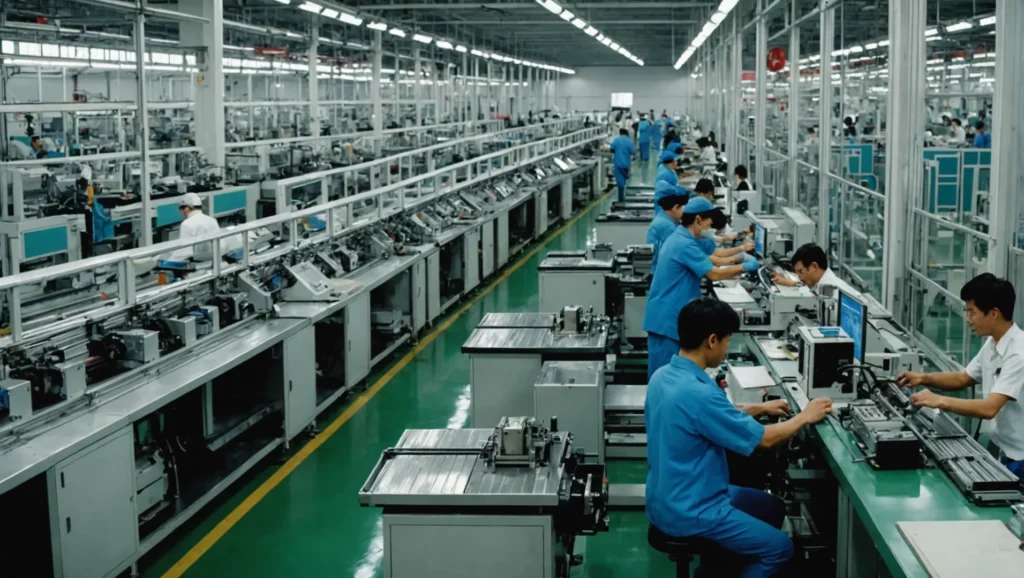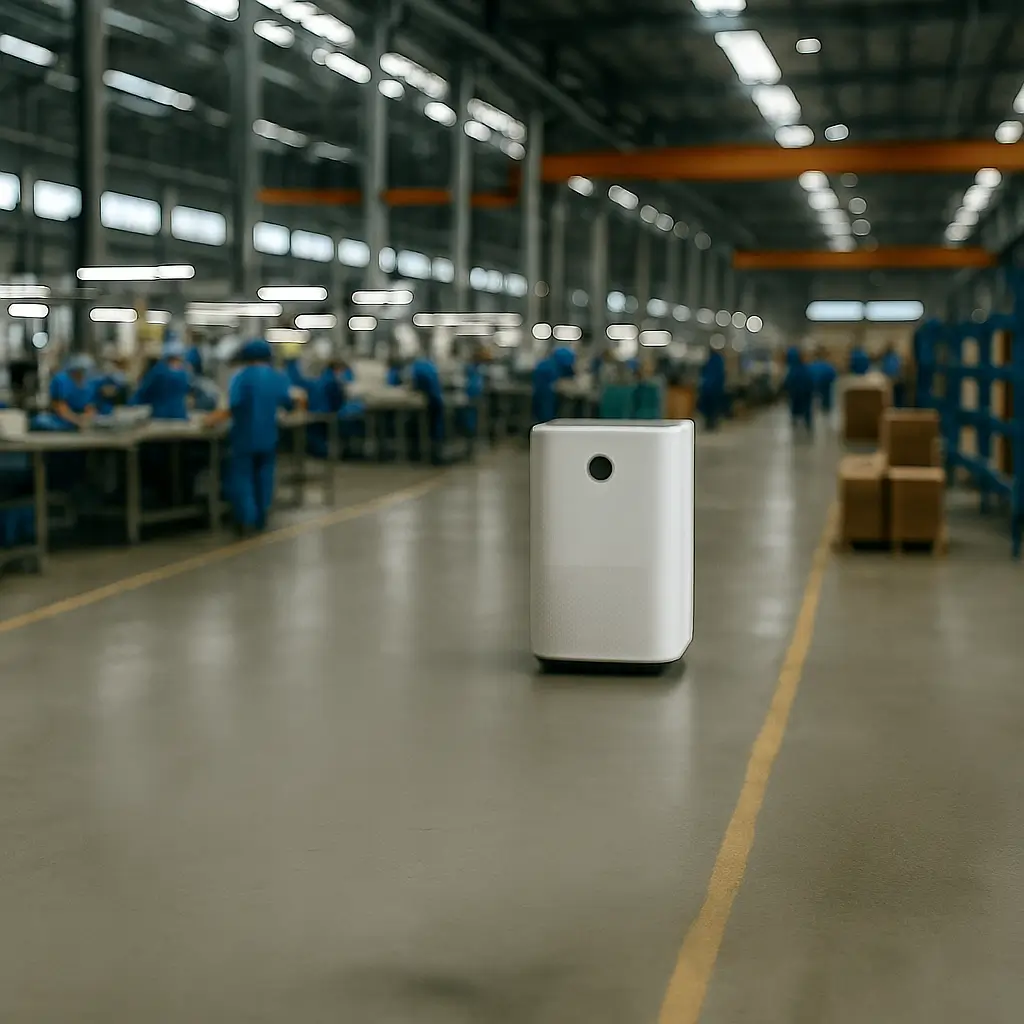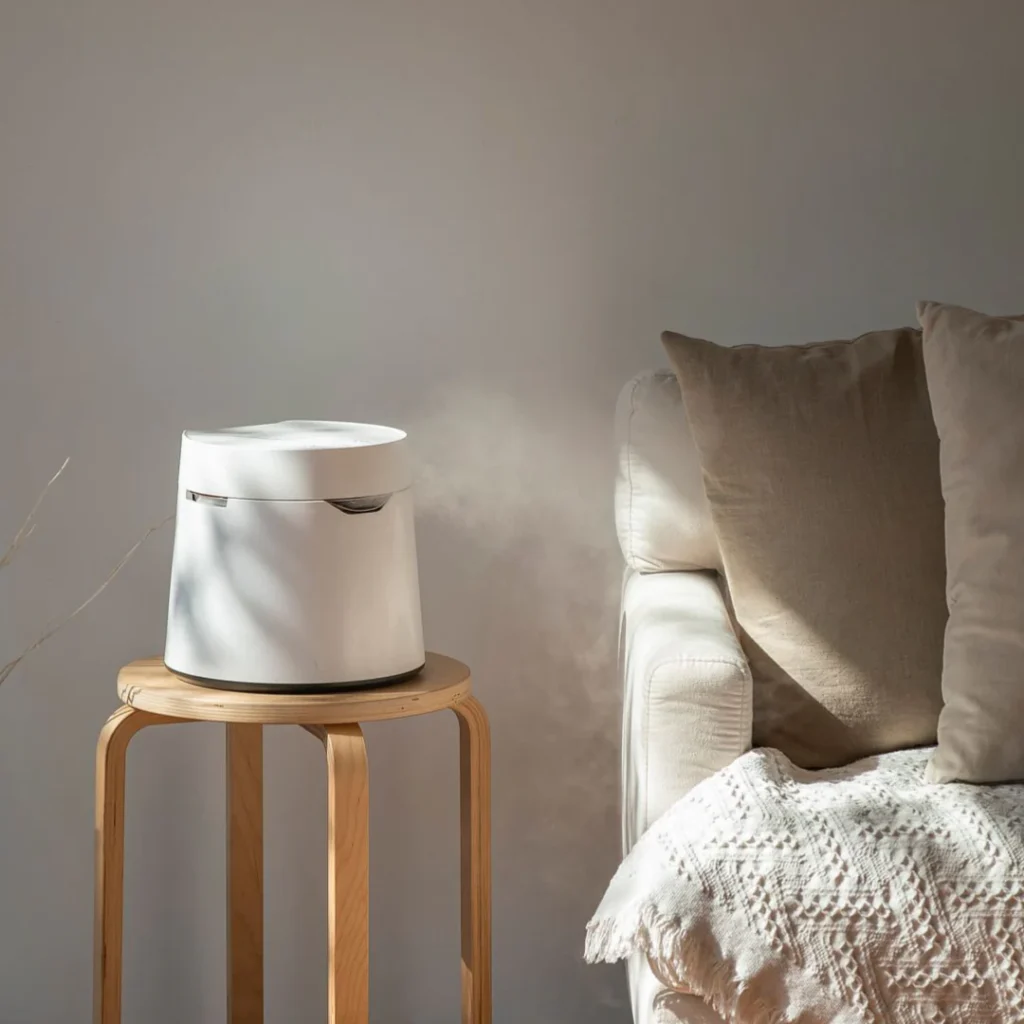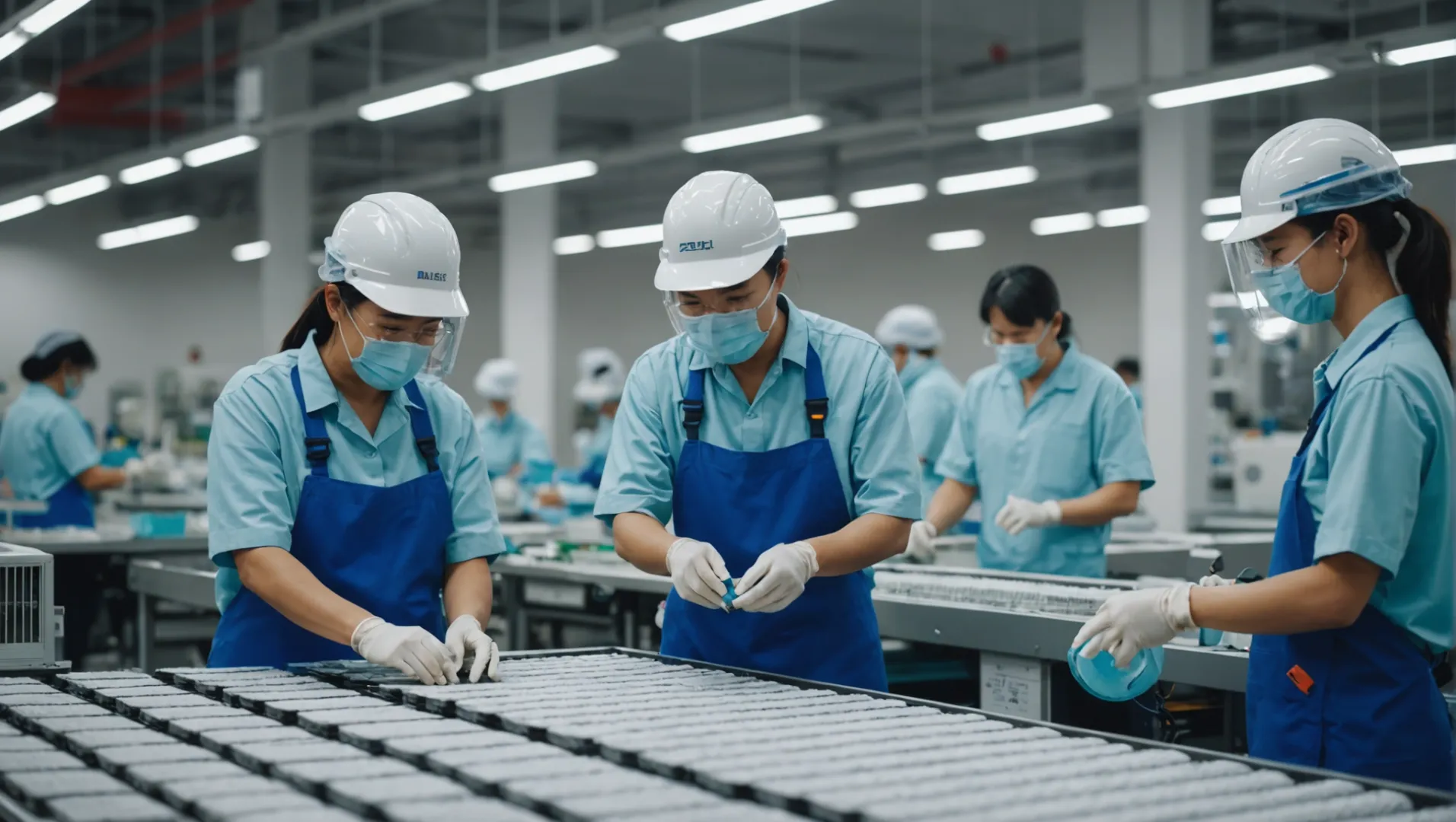
¿Se ha preguntado alguna vez de dónde proceden nuestros purificadores de aire? Sumerjámonos en el fascinante mundo de la producción de purificadores de aire y descubramos a los pioneros: China y Camboya.
En la actualidad, China lidera la producción de purificadores de aire, con una rentabilidad, una capacidad de producción y una capacidad de investigación y desarrollo superiores. Aunque Camboya se está convirtiendo en un centro de producción alternativo, China sigue dominando gracias a su cadena de suministro consolidada y a sus avances tecnológicos.
Pero hay mucho más bajo la superficie. Acompáñeme a explorar la intrincada red de estrategias económicas y tendencias de mercado que dan forma a este sector en auge.
China lidera la producción mundial de purificadores de aire.Verdadero
La eficiencia de costes y la fortaleza de la cadena de suministro de China la convierten en líder.
¿Qué ventaja tiene China en la producción de purificadores de aire?
El dominio de China en la producción de purificadores de aire se debe a su rentabilidad y a la sólida infraestructura de su cadena de suministro.
China destaca en la producción de purificadores de aire gracias a sus bajos costes de producción, su elevada capacidad de fabricación y sus avanzadas instalaciones de I+D. Su consolidada red de suministro y sus políticas gubernamentales estratégicas refuerzan aún más su posición de liderazgo en este sector.

Eficiencia de costes y capacidad de producción
La capacidad de China para producir purificadores de aire a menor coste es una ventaja significativa. Los costes laborales del país, aunque en aumento, siguen siendo competitivos en comparación con los países occidentales. Además, la enorme escala del sector manufacturero chino permite economías de escala, lo que reduce aún más los costes de producción. La proximidad de las materias primas y los componentes reduce los gastos de transporte y aumenta la rentabilidad.
Investigación y desarrollo
Un factor clave del liderazgo chino es su gran atención a la investigación y desarrollo1. Los fabricantes chinos invierten continuamente en I+D para innovar y mejorar las tecnologías de los purificadores de aire. Este enfoque ha llevado a la creación de productos más eficientes y eficaces, adaptados para satisfacer las diversas necesidades de los mercados mundiales. El desarrollo de HEPA filtros y tecnologías avanzadas de depuración ejemplifica el compromiso de China con la innovación.
Gestión estratégica de la cadena de suministro
La red de la cadena de suministro bien integrada de China es la piedra angular de su dominio manufacturero. El país cuenta con una vasta red de proveedores, fabricantes y proveedores logísticos que trabajan juntos a la perfección. Esta integración reduce los plazos de entrega y aumenta la flexibilidad de los procesos de producción. Por el contrario, los centros emergentes como Camboya aún están desarrollando su infraestructura de cadena de suministro, lo que puede plantear retos a la hora de ampliar la producción.
Apoyo y políticas gubernamentales
Las políticas gubernamentales de apoyo desempeñan un papel crucial para mantener el liderazgo de China en la producción de purificadores de aire. El gobierno chino ofrece incentivos como exenciones fiscales, subvenciones y ayudas para fomentar la fabricación nacional. Además, las iniciativas para mejorar las normas medioambientales han estimulado la demanda de purificadores de aire en el país, impulsando aún más el crecimiento del sector.
Las iniciativas estratégicas de China siguen consolidando su posición como primer productor mundial de purificadores de aire. Sin embargo, el panorama está evolucionando con competidores emergentes como Camboya que avanzan a pasos agigantados en este sector.
Los costes laborales de China son inferiores a los de los países occidentales.Verdadero
China mantiene unos costes laborales competitivos, lo que contribuye a una producción rentable.
Camboya tiene una cadena de suministro más desarrollada que China.Falso
La cadena de suministro china está bien integrada, a diferencia de la infraestructura en desarrollo de Camboya.
¿Cómo está emergiendo Camboya como centro manufacturero?
A medida que cambia el panorama manufacturero mundial, Camboya avanza para posicionarse como un actor clave.
Camboya se está convirtiendo en un centro manufacturero gracias a su ubicación estratégica, sus políticas de inversión favorables y sus competitivos costes laborales. La proximidad del país a los principales mercados asiáticos y su alineación con la estrategia China+1 atraen a empresas internacionales que buscan diversificación. Sin embargo, persisten retos como las infraestructuras y la dependencia de materiales importados.
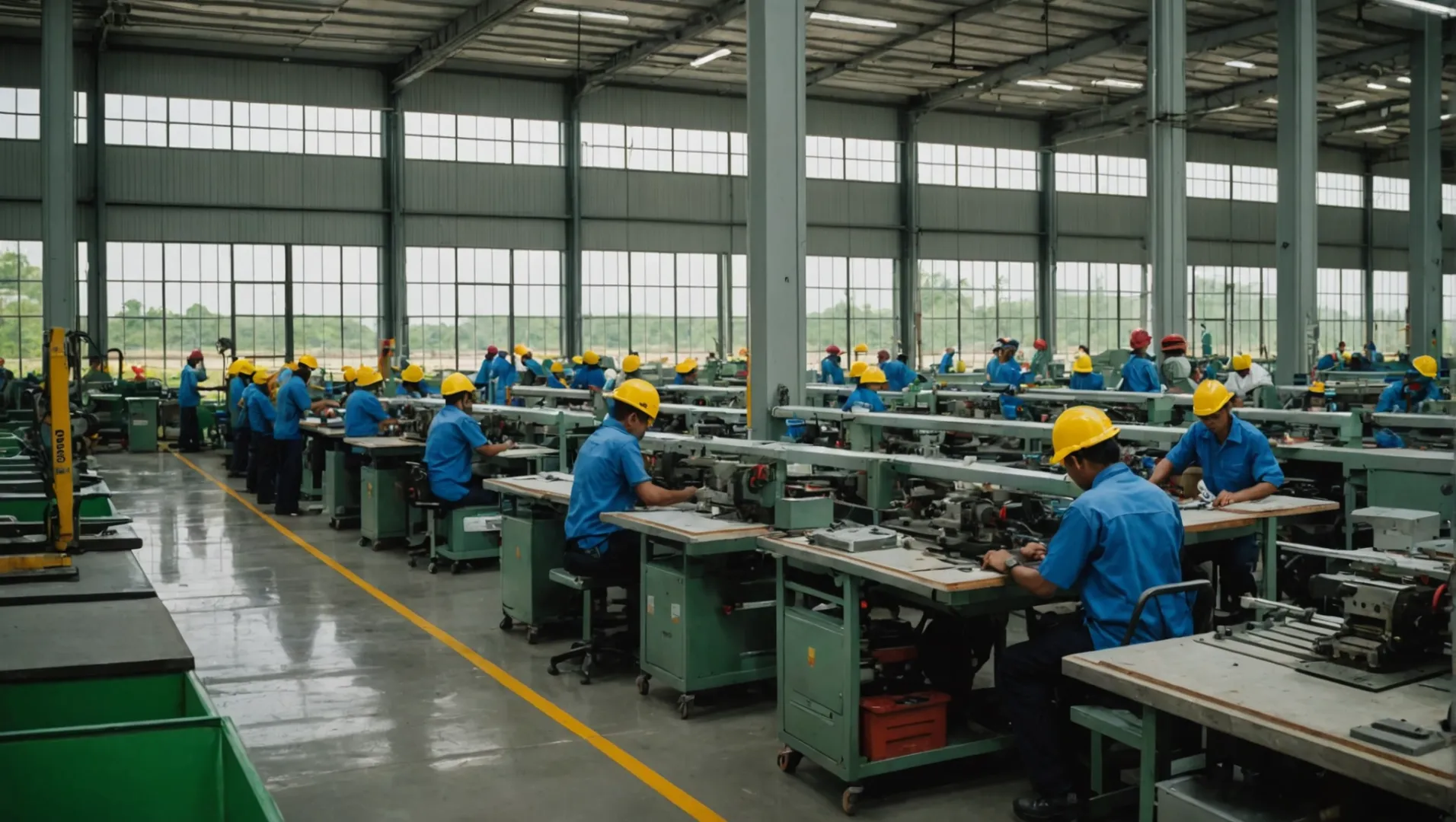
Ubicación estratégica y proximidad
La ventaja geográfica de Camboya reside en su proximidad a grandes gigantes asiáticos de la fabricación, como China y Vietnam. Esta ubicación es fundamental para las empresas que desean implantar la Estrategia China+12que consiste en diversificar las cadenas de suministro estableciendo bases de producción fuera de China para mitigar los riesgos asociados a una excesiva dependencia de un solo país.
Políticas de inversión favorables
El gobierno camboyano fomenta activamente la inversión extranjera directa (IED) mediante incentivos fiscales y zonas económicas. Estas políticas están diseñadas para crear un entorno favorable a los negocios que atraiga a las empresas multinacionales. Por ejemplo, el gobierno ha establecido zonas económicas especiales (ZEE) que ofrecen exenciones fiscales e importaciones libres de impuestos, lo que es fundamental para las empresas que desean reducir sus costes operativos.
Costes laborales competitivos
Camboya ofrece unos costes laborales competitivos en comparación con sus homólogos regionales. Esta rentabilidad es atractiva para las industrias que dependen de procesos intensivos en mano de obra, como la fabricación de prendas de vestir y el ensamblaje de productos electrónicos. La disponibilidad de una mano de obra joven y capacitada aumenta aún más el atractivo de Camboya como destino manufacturero.
| Factor | Camboya | Vietnam |
|---|---|---|
| Salario medio mensual (USD) | 190 | 280 |
| Facilidad para hacer negocios | 144 | 70 |
Retos infraestructurales
A pesar de estas ventajas, Camboya se enfrenta a importantes retos en materia de infraestructuras. El país está invirtiendo en la mejora de sus carreteras, puertos y sistemas de suministro de energía, pero estos avances requieren tiempo y una inversión sustancial. Las empresas deben sopesar las ventajas de unos costes más bajos frente a los posibles obstáculos logísticos.
Dependencia de materiales importados
La mayoría de las materias primas y los componentes siguen siendo importados, principalmente de China. Esta dependencia puede plantear riesgos relacionados con las interrupciones de la cadena de suministro. A medida que Camboya desarrolla su sector manufacturero, se están realizando esfuerzos para crear redes de proveedores locales que podrían reducir la dependencia de las importaciones y mejorar la resistencia de la cadena de suministro.
Perspectivas de futuro
Si sigue centrándose en el desarrollo de las infraestructuras y la mejora de las políticas, Camboya tiene potencial para reforzar su posición como centro manufacturero. Sin embargo, para aprovechar realmente esta oportunidad, debe hacer frente a los retos existentes y, al mismo tiempo, aprovechar sus ventajas estratégicas. A medida que las empresas mundiales sigan diversificando sus cadenas de suministro, el papel de Camboya en el ecosistema manufacturero regional podría experimentar un crecimiento significativo.
Los costes laborales de Camboya son inferiores a los de Vietnam.Verdadero
El salario medio mensual de Camboya es de $190, inferior al de Vietnam ($280).
Camboya depende exclusivamente de materiales locales para su fabricación.Falso
Camboya importa la mayoría de las materias primas, principalmente de China.
¿Qué impacto tienen los aranceles en la producción de purificadores de aire?
Los aranceles están remodelando la industria mundial de purificadores de aire, afectando a las estrategias de producción y a la dinámica del mercado.
Los aranceles sobre los productos chinos han aumentado los costes de producción de los purificadores de aire, lo que ha llevado a las empresas a diversificar los lugares de fabricación. Esto ha provocado cambios en la cadena de suministro, y algunos fabricantes están explorando emplazamientos alternativos en el Sudeste Asiático.
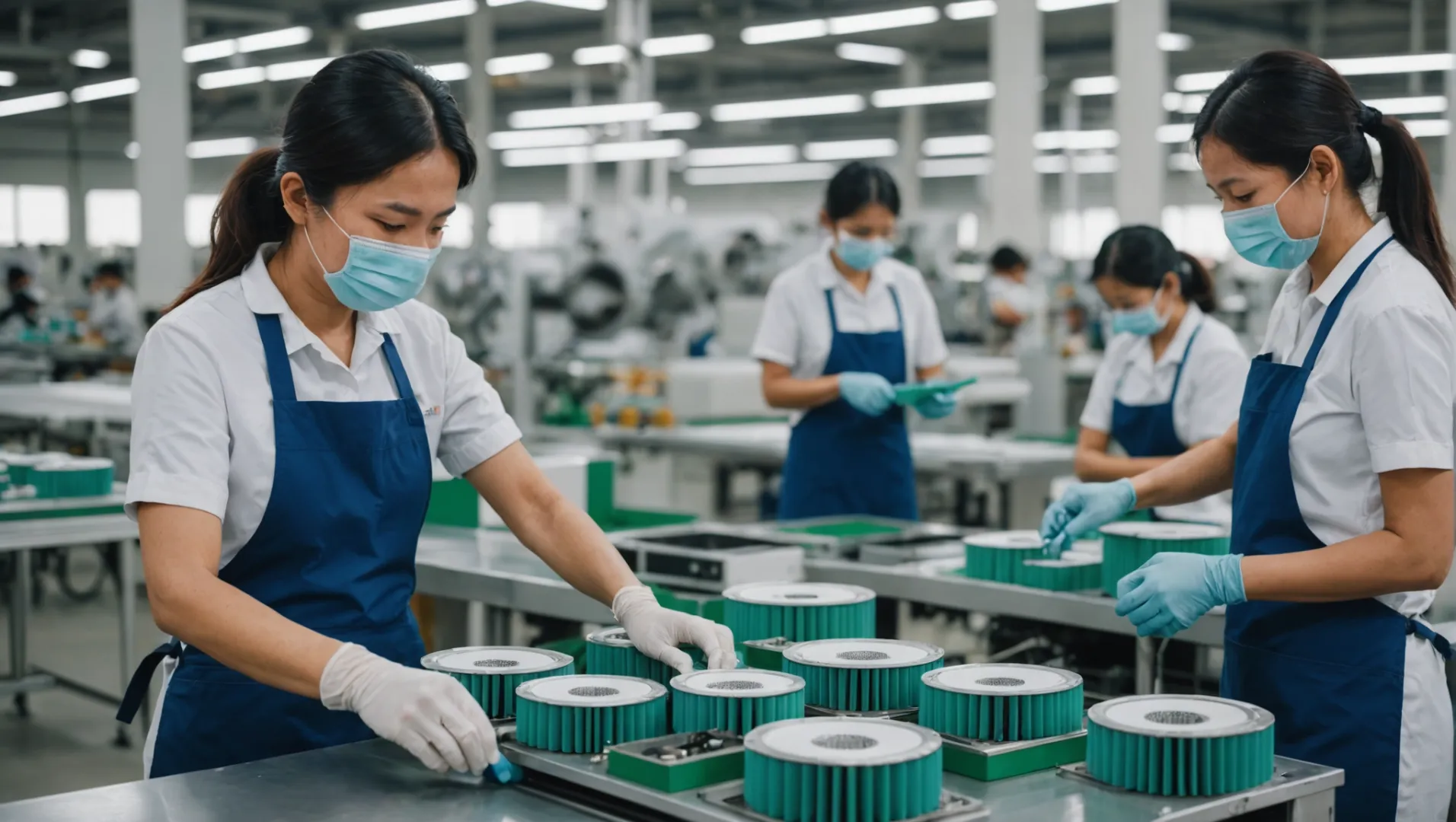
Comprender la influencia de los aranceles en los costes de producción
La imposición de aranceles, en particular por parte de Estados Unidos a las importaciones chinas, ha aumentado significativamente el coste de producción de los purificadores de aire. Dado que Estados Unidos representa uno de los mayores mercados para estos productos, cualquier aumento de los costes debido a los aranceles puede repercutir directamente en las estrategias de precios y la rentabilidad de los fabricantes.
Para mitigar estos efectos, las empresas adoptan cada vez más la Estrategia China+13 diversificar su base de producción. Esto implica mantener un centro de fabricación principal en China y establecer instalaciones adicionales en países como Vietnam o Tailandia.
Navegar por los cambios de la cadena de suministro
La situación arancelaria ha provocado una reevaluación de las cadenas de suministro. Los fabricantes están explorando emplazamientos alternativos para sus operaciones, mirando hacia los países del Sudeste Asiático que ofrecen proximidad a China. La deslocalización pretende aprovechar los menores costes laborales y evitar los elevados aranceles.
A pesar de estos cambios, muchos componentes y materias primas esenciales siguen procediendo de China. Esta dependencia garantiza que, aunque cambien las ubicaciones de fabricación, los elementos centrales de la cadena de suministro sigan entrelazados con el ecosistema industrial chino.
Respuestas estratégicas de los principales actores
Varios fabricantes líderes están respondiendo a los aranceles trasladando sus bases de producción a países como Camboya. Estos países ofrecen una ventaja estratégica por su proximidad a China y sus favorables acuerdos comerciales con grandes mercados como Estados Unidos.
Un ejemplo detallado puede verse en cómo las empresas gestionan sus Actividades de I+D4. Aunque las fábricas se deslocalicen, los esfuerzos de investigación y desarrollo suelen permanecer en China, aprovechando su avanzada infraestructura tecnológica y su experiencia. Esto permite seguir innovando al tiempo que se sortean estratégicamente las implicaciones arancelarias.
Los aranceles han reducido los costes de producción de los purificadores de aire.Falso
Los aranceles han aumentado los costes de producción, no los han reducido.
Los fabricantes recurren a la estrategia China+1 para mitigar los aranceles.Verdadero
La estrategia consiste en diversificar la producción fuera de China para reducir el impacto arancelario.
¿Está la estrategia "China+1" reconfigurando el sector?
La estrategia "China+1" se está convirtiendo en un factor fundamental de las tendencias manufactureras mundiales.
La estrategia "China+1", destinada a diversificar la producción más allá de China, está reconfigurando significativamente las industrias al mitigar los riesgos asociados a la excesiva dependencia de un solo país. Este enfoque está impulsando a las empresas a explorar nuevos centros de fabricación como Vietnam, Tailandia y Camboya.

Entender la estrategia "China+1
La estrategia "China+1" consiste en que las empresas trasladen parte de su producción fuera de China, manteniendo al mismo tiempo una presencia significativa en ese país. Este enfoque obedece principalmente a la necesidad de diversificar las cadenas de suministro y reducir la dependencia de un solo país, minimizando así riesgos como las repercusiones arancelarias y las tensiones geopolíticas.
Factores que impulsan la estrategia5
Varios factores contribuyen a la adopción de la estrategia "China+1":
- Tensiones geopolíticas: Con la imposición de aranceles y restricciones comerciales, muchas empresas intentan mitigar los riesgos ampliando sus operaciones a otros países.
- Consideraciones económicas: Aunque China ofrece ventajas competitivas en términos de coste y capacidad, el aumento de los costes laborales está impulsando a las empresas a explorar ubicaciones más rentables.
- Resistencia de la cadena de suministro: Al diversificar los lugares de producción, las empresas pueden mejorar la resistencia de su cadena de suministro, garantizando la continuidad de su actividad incluso en medio de perturbaciones.
Nuevos centros de producción6
Países como Vietnam, Camboya y Tailandia se perfilan como alternativas atractivas. Estas naciones ofrecen varias ventajas:
- Proximidad a China: La proximidad geográfica permite una logística eficaz y un acceso continuo a las materias primas y componentes de China.
- Acuerdos comerciales favorables: Muchos de estos países tienen acuerdos comerciales beneficiosos con los principales mercados, lo que reduce los aranceles y facilita un comercio más fluido.
Implicaciones sectoriales
En industrias como la electrónica y la textil, la estrategia "China+1" es más pronunciada. Los fabricantes están estableciendo nuevas plantas en el Sudeste Asiático al tiempo que mantienen bases de I+D e ingeniería en China debido a su sólido ecosistema tecnológico.
Retos y consideraciones
Aunque la estrategia presenta oportunidades, también plantea retos:
- Desarrollo de infraestructuras: Los centros emergentes pueden carecer de la sofisticada infraestructura que existe en China, lo que requiere importantes inversiones.
- Mano de obra cualificada: La creación de mano de obra cualificada en las nuevas ubicaciones es crucial para mantener la calidad y la eficiencia de la producción.
Comprender esta dinámica ayuda a las industrias a navegar con eficacia por las complejidades de los cambios en la fabricación mundial.
La estrategia "China+1" reduce la dependencia de China.Verdadero
La estrategia pretende diversificar la producción, minimizando la dependencia de China.
Vietnam es un actor clave en la estrategia "China+1".Verdadero
Vietnam está emergiendo como centro manufacturero gracias a unas condiciones favorables.
Conclusión
Aunque China sigue a la cabeza, el panorama de la producción de purificadores de aire está evolucionando. No perder de vista estas tendencias es esencial para las oportunidades futuras.
-
Explore los innovadores avances de China en tecnología de purificadores de aire.: El índice de penetración de los purificadores de aire en China es inferior al 2%, muy por detrás de la media mundial. La cifra es del 40% en Europa... ↩
-
Comprender el enfoque estratégico que impulsa el crecimiento de la industria manufacturera de Camboya ..: La estrategia China Plus One, también conocida como Plus One o C+1, es una estrategia de la cadena de suministro que anima a las empresas a minimizar su... ↩
-
Descubra cómo las empresas diversifican la producción más allá de China para mitigar los aranceles..: El tamaño del mercado de purificadores de aire de China se estimó en 2,58 mil millones de USD en 2023 y se espera que crezca a una CAGR de 7,6% de 2024 a 2030. ↩
-
Explora por qué la I+D sigue anclada en China a pesar de los cambios en la fabricación...: La filtración en interiores puede reducir eficazmente la concentración de PM2,5 en interiores, lo que conlleva una reducción de la exposición humana (Bard et al., 2019, Barn et ... ↩
-
Explore por qué las empresas están trasladando la producción desde China: Adoptar China Plus One permite a su empresa explorar costes laborales competitivos, tipos de cambio favorables e incentivos fiscales en ... ↩
-
Conozca los nuevos centros de fabricación del Sudeste Asiático: En los últimos meses, la atención de los medios de comunicación se ha centrado cada vez más en India y Vietnam como dos destacados aspirantes a la estrategia "China más uno". ↩



